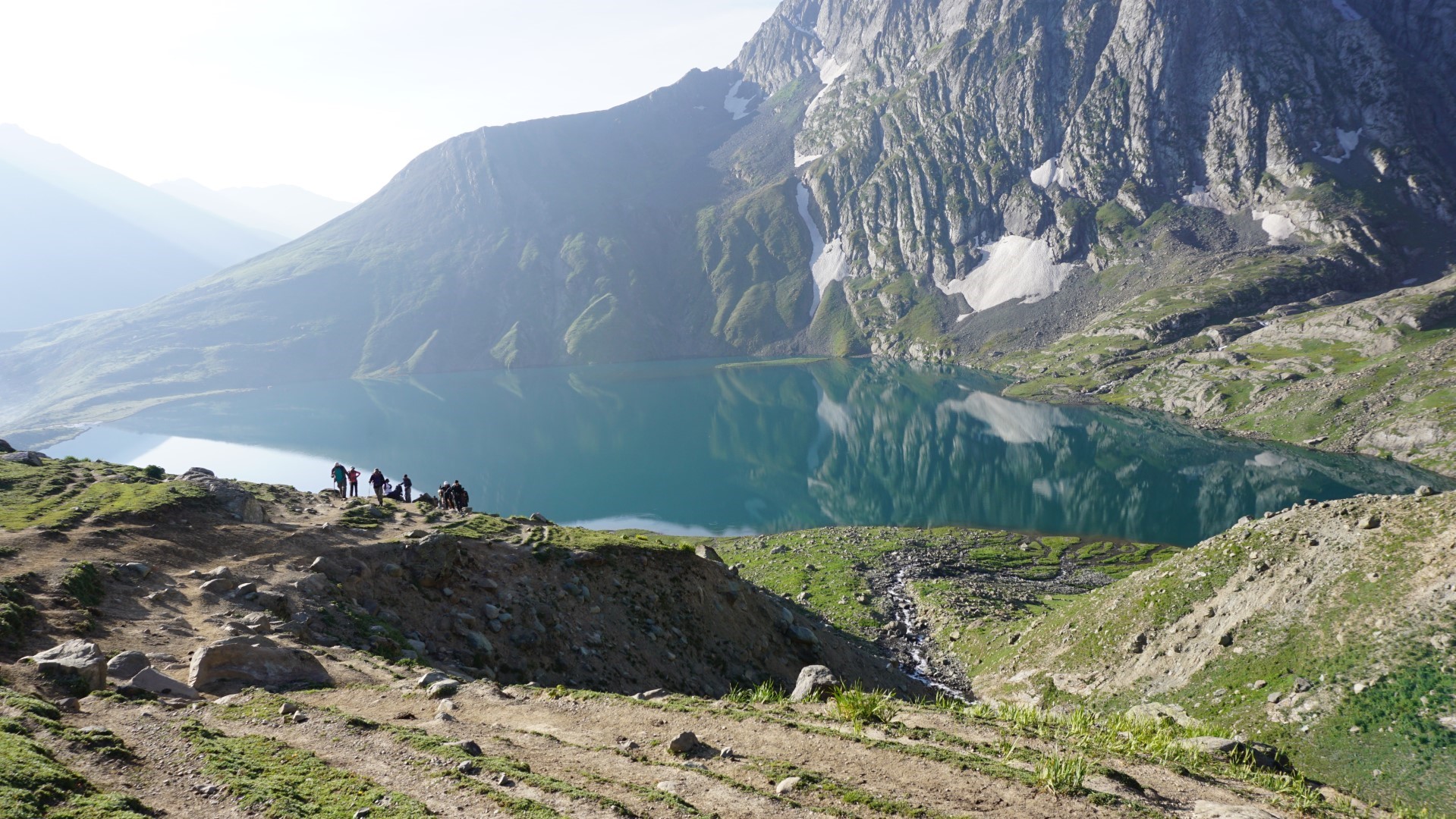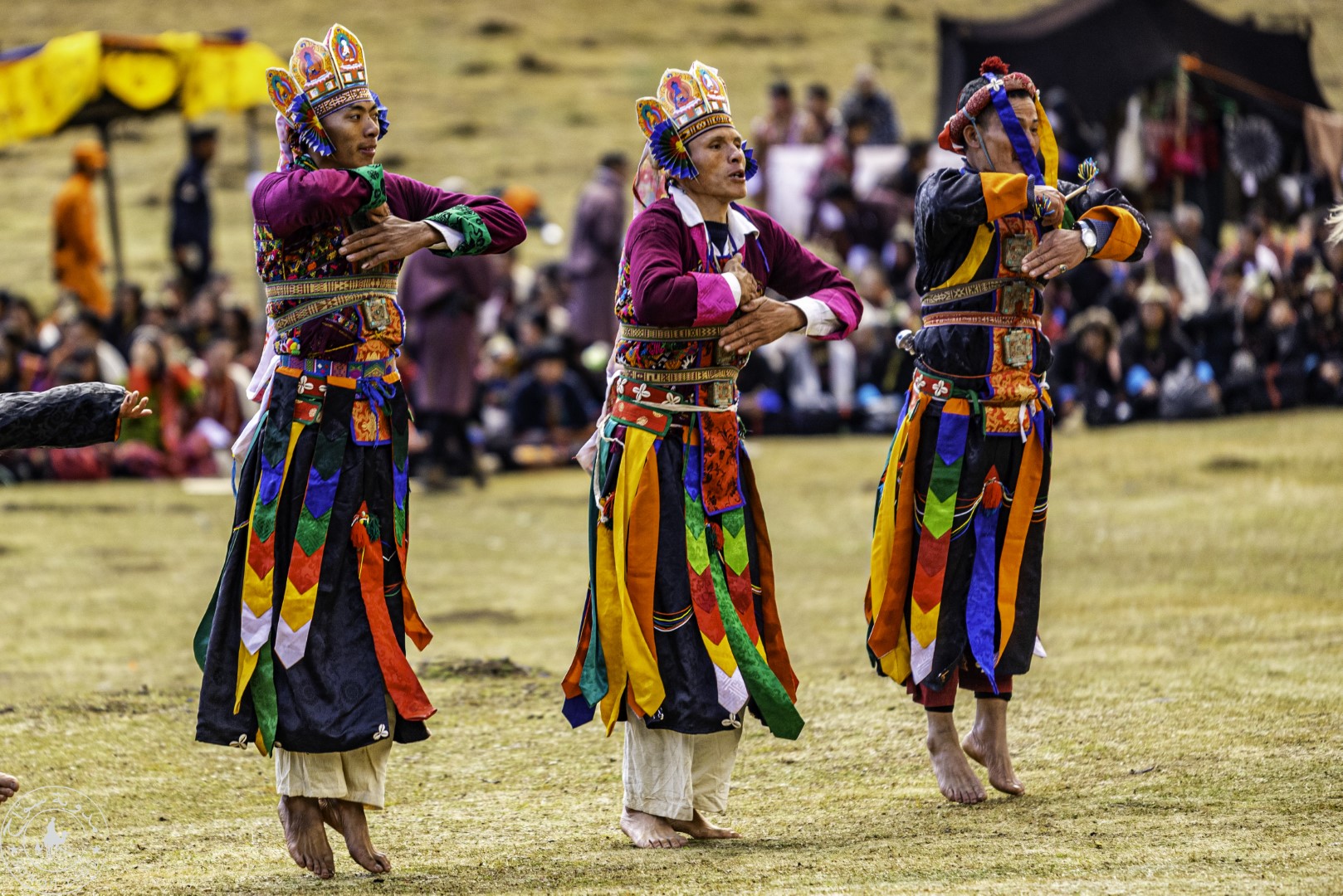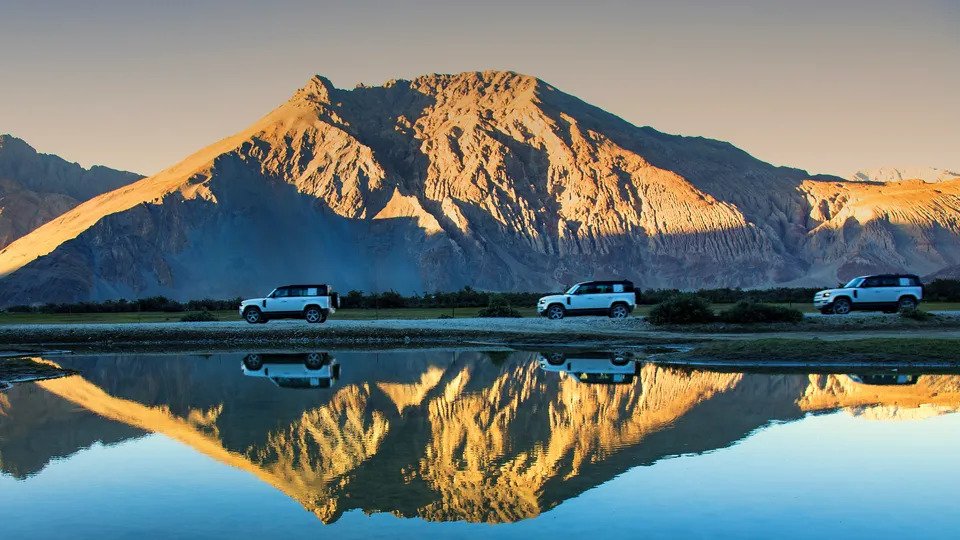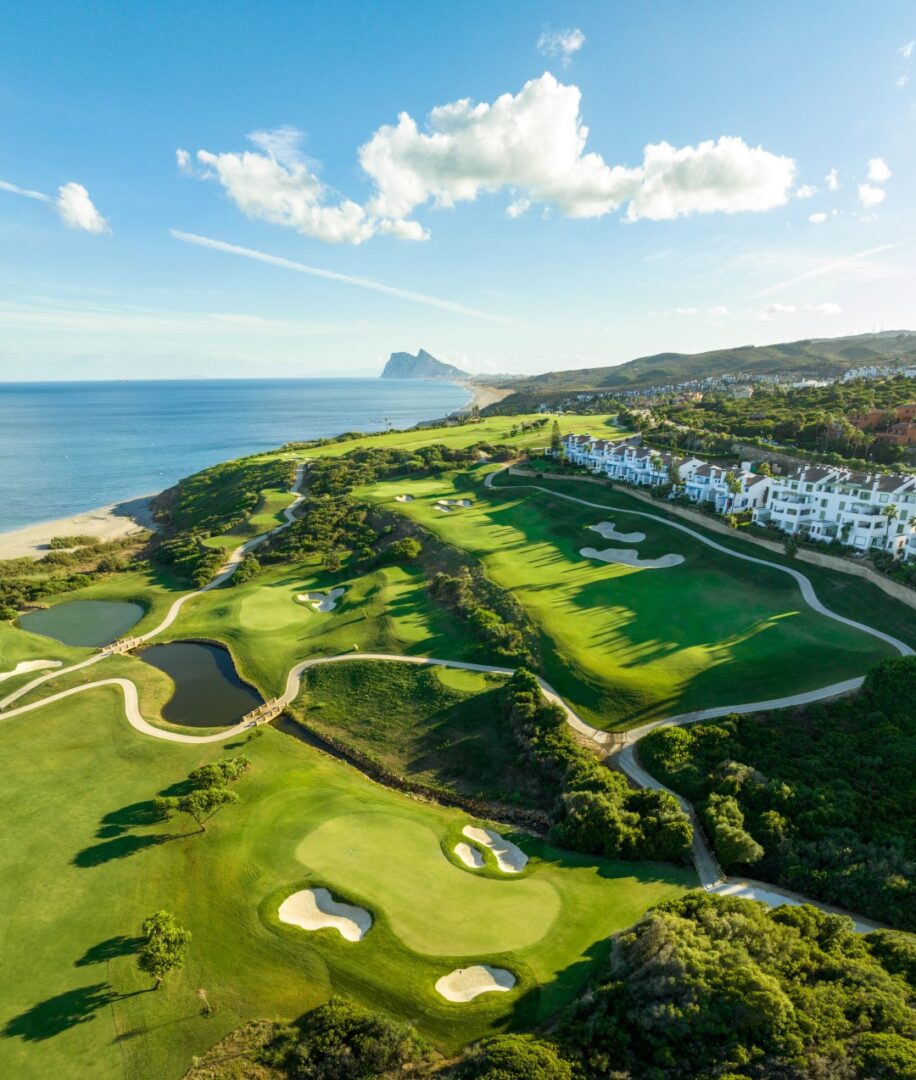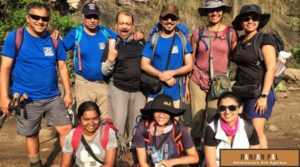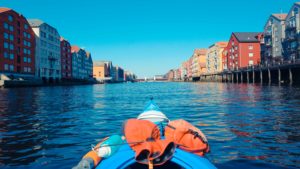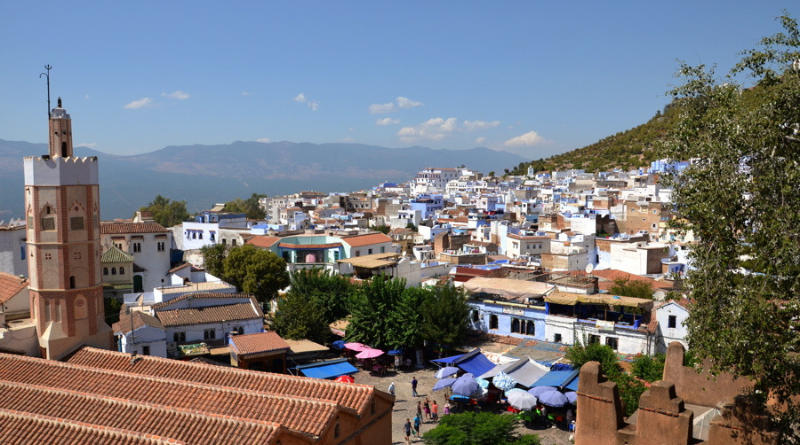

48 Hours in Chefchaouen – The Blue City of Morocco
Visitors to Morocco can find a cool, relaxing reprieve from the busy medinas of Fez and Marrakesh in the beautiful mountain town of Chefchaouen. Located just a few hours by bus from Tangier and far enough off the beaten track to dissuade many tourists, Chefchaouen is a quiet place which retains its quintessential Moroccan charm and so is a magnet for travellers looking for something a bit more authentic. Its name comes from “chaouen”, which is the Berber word for the horns of a goat, and refers to the shape of the two mountains overlooking the town. So it is often referred to as just Chaouen by locals.


It is not its strange name, the beautiful and unique handicrafts sold by local craftsman, or the delicious goat cheese that attracts the majority of tourists to Chefchaouen. It is the blue-painted houses and buildings of the city, a tradition inherited from the former Jewish inhabitants that has given the place an identity it boasts of. Although the old natural blue dye tekhelet which has a religious significance and which is processed from a species of shellfish, has long disappeared, blue is still woven into the cloth of their tallit and painted on their homes by the locals. Walking through the blue streets of Chaouen one is reminded of the blue sky above and it is as if heaven were reflected on earth.
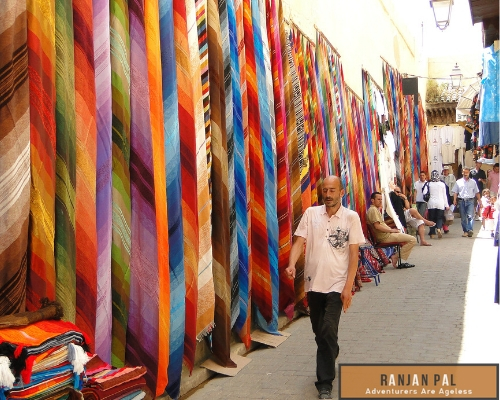

A profusion of colours brighten a street in the old medina
Day 1: Morning
In this town which has so many little stories and hidden finds, it might not be a bad idea to hire a tour guide even if you like to do things on your own and normally avoid them. Start your day with an early morning stroll through the blue-walled old medina which is not a complicated labyrinth like Fez or Meskes so you can’t get lost! The really charming thing about it is that unlike many of the larger medinas in Morocco, it is still populated by a high percentage of the city’s residents so you can see them going about their daily lives much as they have for the last few hundred years. People are friendly and pleasant and you can stop and look at a tourist map without being accosted by faux guides and souvenir peddlers.
The shopping in Chefchaouen is one of its biggest tourist attractions. It might not be as varied or as grand as in Morocco’s imperial cities but you will love the relaxed ambiance which allows you to stroll at leisure and appreciate the local leather products, wool garments and woven products for which the place is best known. Be sure to check these and other local handicrafts at the Ensemble Artisanal and get some photos of the typical blue-wash architecture. Stop by Plaza Hata to purchase goat butter and cheese or local mountain honey or you can head to Plaza el-Majzen for more typical souvenirs and regional handicrafts. Most of the shop keepers have a relaxed attitude and will not hassle you.
Afternoon
Order lunch at a cafe near Plaza Uta el Hammam, the main square in the heart of the medina. The Plaza boasts an ambiance which is a fusion between Arab and Spanish influences and has a wonderful selection of both street food and restaurants. It is an ideal spot where you can watch people walk by and also admire the majestic Riz Mountains which overlook the city. Afterwards you can explore the Grand Mosque and the Kasbah which dominate the Plaza. The Mosque is well known for its stunning architecture and its 15th century octagonal shaped tower and was built by the son of the town’s founder, Ali Ben Rachid. Unfortunately tourists cannot tour inside as it is not open to non Muslims but the Mosque still makes for impressive viewing from the outside and the call to prayer which sounds five times a day is an arresting experience.


View from the grand mosque and the kasbah
Evening
There are no restrictions on entering the Kasbah, the town’s walled fortress which was restored in the 17th century. Inside, you will find a beautiful Andalusian garden which makes for a tranquil oasis of green offsetting the flood of blue all around. There is also a small ethnographic museum which boasts an unrivalled collection of artefacts from pottery to musical instruments from which you can learn about the history and culture of the Rif Mountains. Make a point of visiting the art gallery which has some impressive depictions of Old Chefchaouen and the prison cells used during Spanish rule. End your visit by climbing to the rooftop of the Kasbah from where you can get a panoramic view of the town.
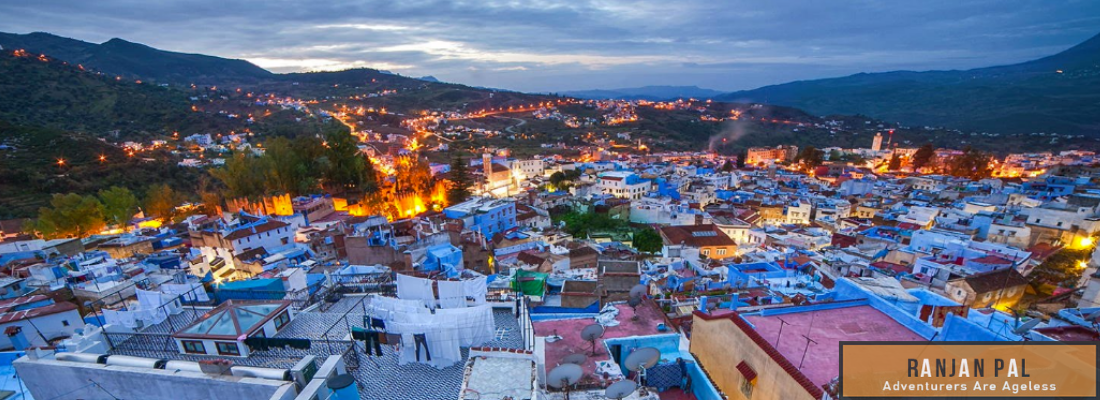

Day 2: Morning
Chefchaouen, nestled at the base of the Rif Mountains, offers several interesting excursions and you can spend your second day exploring the area. If you feel like walking, a short hike south of the medina will take you to an old abandoned castle and mosque built on a hill and dating back to the 1200’s. You can climb the minaret rebuilt by the Spanish for some impressive views over Chaouen and the valley below. Another 15 minute walk outside of the medina walls, this time to the east, will take you to “Ras el Maa” (or “Head of the Water”) which is a small waterfall.
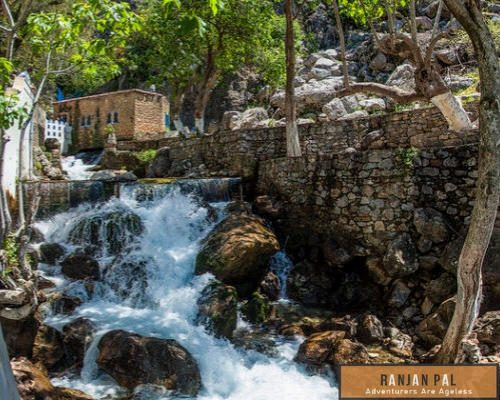

If you have more time then hiking the Rif Mountains through Talassemtane National Park is a great option. Less well known than the Atlas Mountains, but just as beautiful and definitely less taxing, these peaks rise to 2400 metres above the Mediterranean and boast some of the best hiking routes in North Africa. The Park has beautiful cedar and fir forests and is home to the Barbary Macaque (which is a type of ape native to Morocco) as well as several species of fox, jackal and bats.
Afternoon
Many locals gather here during the hot months to cool off and there is a small café nearby to relax with a coffee or tea. Far more impressive are the Cascades d’Akchour but you will need to take a 30 minute taxi ride to get there. An attractive tourist trail takes you to a beautiful series of small waterfalls where you can take a dip in the crystal blue waters of the rock pools. Make sure to look out for the impressive Bridge of God, a natural rock structure which spans the river.
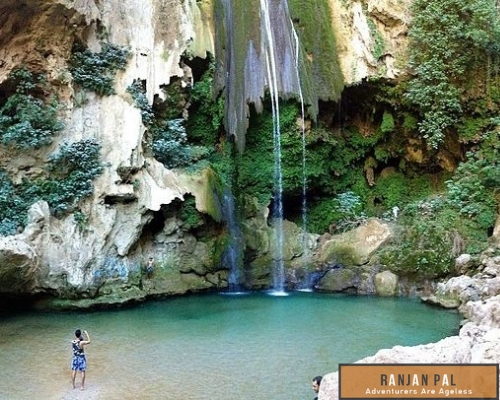

Evening
Back at the medina, you can be adventurous and scrub yourself down off at a hammam, a true Moroccan experience in cleanliness. Just off the Plaza Uta elHammam is the public hammam if you want to go totally cheap and cheerful. Timings are different for men and women and you will have to bring sandals, soap, a shower scrub and a towel. For a more luxurious experience, the Art du bien-être ( Art of Good Living) in the same area is a more upscale “spa” with massages, foot soaks, facials, and exfoliations.
End your visit to Chefchaouen by sampling traditional Moroccan cuisine at one of the finer restaurants in the medina. La Lampe Magique overlooking the Plaza Uta el-Hammam is a great option because of its atmosphere. Get a table on the terrace overlooking the crowds milling below and enjoy a quiet candlelight dinner. If the quality of the food is the most important thing then go to either Alladin or Al Kasbah for a wide range of Moroccan favourites.
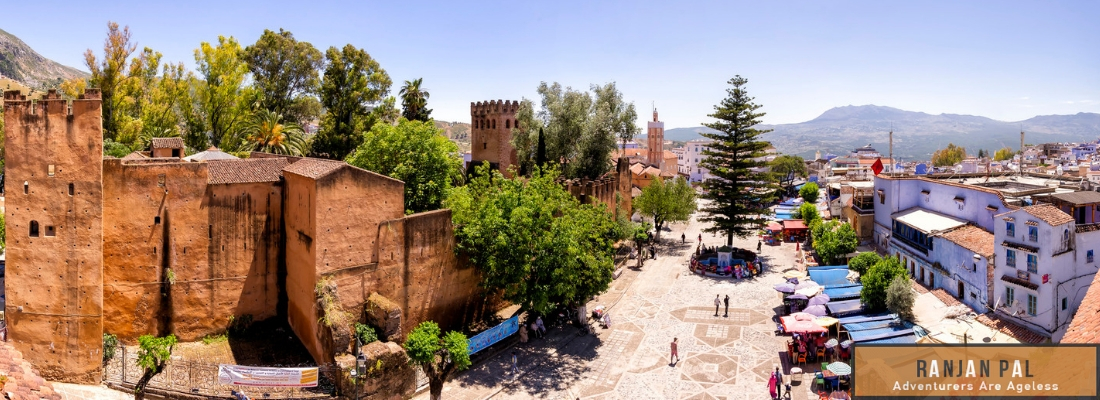

**This article has originally appeared in the November 2016 edition of Air Arabia Magazine “Nawras”. Check the PDF version here.
![]()
![]()

